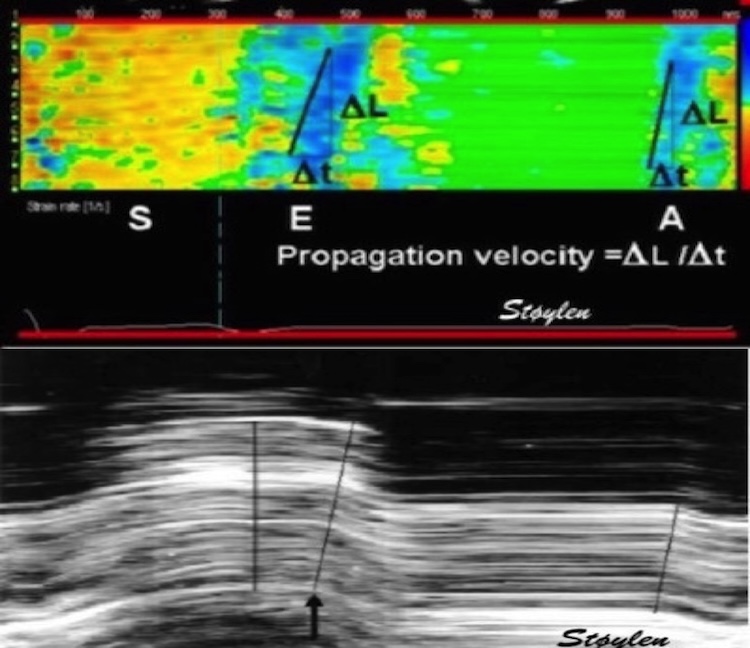1/ Tweetorial. Prompted by a question of "layer strain", I'd like to go into that, as the concept is based on a completely erroneous perception of strain components somehow related to the directional fibre shortening. This is not the case.
2/ The three normal strains are longitudinal, circumferential and transmural (or radial). The relations between all three major strains are explored in the HUNT study: openheart.bmj.com/content/openhr…
3/ Transmural (radial) strain is simply wall thickening, while circumferential strain is fractional circumferential shortening, which, as the circumference is 3.14*diameter, equals fractional diameter shortening. 

4/ This means that strains can be measured by calliper measurements, without speckle tracking, although with some assumptions of symmetry. 

5/ there is a widespread misconception that circumferential strain represents circumferential fibre shortening. The outer circumferential (and diameter) systolic shortening is 10 - 15%, and represents the true circumferential fibre shortening. pubmed.ncbi.nlm.nih.gov/31673384/
6/ there is a gradient of circumferential shortening with increased numerical values from the outer to the endocardial circumference, the table is from the HUNT study. This has erroneously been described as differential layer function, but is just a function of circular geometry. 

7/ As the wall thickens, both midwall and endocardial circumferences moves inwards in response to this, and shortens as a function of this inward motion. This means that circumferential strain is mainly a function of wall thickening. 

8/ Midwall circumference is pushed inward by thickening of the outer half of the wall, while endocardial circumference is pushed inward by the whole thickness of the wall, circumferential shortening is numerically highest at the endocardium. 

9/ This, is also true of transmural strain. Each layer of the wall towards the endocardium expands into a smaller space (smaller diameter), meaning layers thicken more towards the endocardium. Hence, the midwall circumference moves inwards even relative to the tissue. 

But what is wall thickening? As the ventricle shortens, the myocardium, being more or less incompressible, must thicken to conserve volume. Thus, both transmural strain and circumferential strain are strongly related to longitudinal strain. 

11/All three strains are the 3D spatial *coordinates* of the total deformation of a single 3d object (LV myocardium), and NOT a function of different fibre directions. All there strain components result from total fibre shortening.
12/ Still, reduced circumferential strain will carry diagnostic and prognostic information, endocardial strain the most, but again, this is simply the result of reduced wall thickening, so it’s the emperor’s new clothes again.
14/ But what about longitudinal layer strain? It has been described with a gradient, strain being numerically highest in the endocardial layer, and lowest in the outer layer. Is this differential fibre function?
15/ If so, increased shortening in the endocardial slyer, and least in the outer, would give torsion of the mitral ring, which is counterintuitive. To say nothing of the effect on the tricuspid part of the total AV-plane🤯 

16/ With only wall thickening, no wall shortening (not compatible with volume conservation, but illustrative), any application tracking wall thickening inwards (e.g. ST), shows shortening, although there is none. And greatest at the endocrdium. Curvature is not a prerequisite. 

17/ so differential layer shortening is a function of wall thickening that is tracked by the application, and differential fibre shortening is unlikely as a cause. Again, that means that the midwall and endocardial longitudinal strain is over estimated by tracking. 

18/ and again: the three strain components are spatial coordinates of the total 3D deformation, not measures of fibre direction function. 

• • •
Missing some Tweet in this thread? You can try to
force a refresh


















